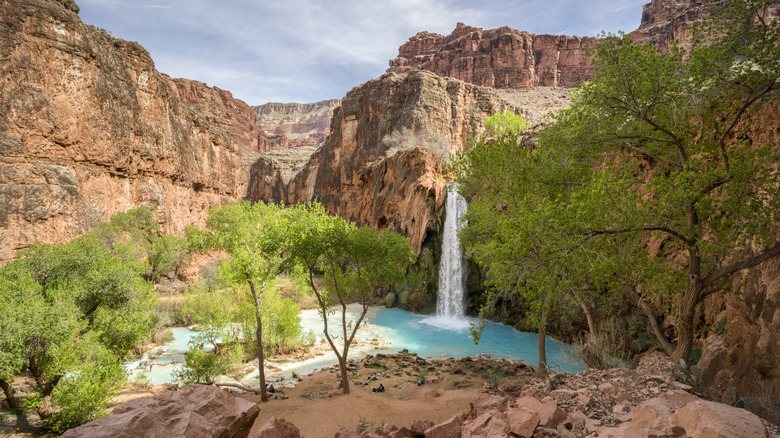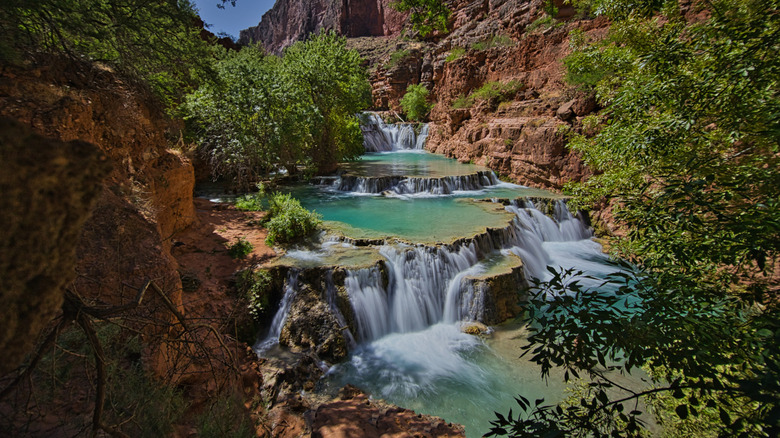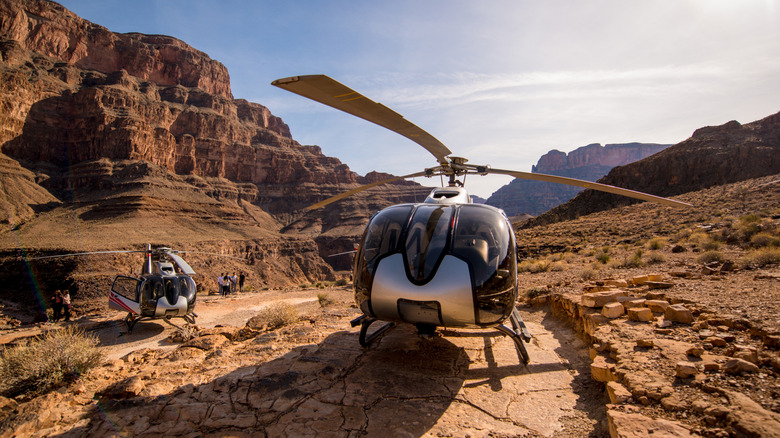Hidden In Arizona's Grand Canyon Is A Village With Teal Waters, Remote Charm, And Ethereal Waterfalls
The Grand Canyon might be Arizona's most famous natural wonder, but there's a secret tucked deep within its walls that most visitors never see. Past the rim, below the dusty switchbacks and into the folds of sheer red rock, lies a secluded village. Welcome to Supai, home of the Havasupai Tribe with roughly 200 residents total. Here, mail still arrives by mule, turquoise cascades tumble into travertine pools, and time flows at the pace of the river. It's not just the most remote community in the contiguous United States, it's a living testament to endurance, adaptation, and a profound connection to the land.
Supai isn't a pit stop, it's a pilgrimage. There are no roads that lead here, only trails carved over generations and stories whispered into chasm winds. For the Havasupai people, whose name means "People of the Blue Green Waters," this land is sacred and sustaining. For them, the water isn't simply in the river, it flows through each member of the tribe. Long before Instagram-worthy shots of Havasu Falls, one of the top bucket-list hikes in the U.S., the tribe existed in gentle balance with the creek. Today, the Havasupai Tribe takes great care to preserve their home after centuries of displacement. Visiting Supai is more than a hike into paradise — it's stepping into a place shaped by resilience, identity, and reverence for nature.
This isn't the Grand Canyon you've seen on postcards. This is canyon life, real and rooted — where nature roars, history echoes, and the spirit of the 1,000-year-old Havasupai Tribe continues to flow as vividly as the falls.
Adventure awaits in the remote hideaway of Supai
This wild oasis stuns with spring-fed falls and a canyon backdrop so old, it holds nearly 2 billion years of geologic wonder. When you enter this secluded village, you're stepping into a living mosaic where every building and pathway tells a story. The homes are built from local stone and timber, blending seamlessly into the landscape. The heart of the village pulses around a humble general store and cozy cafe, where locals — many still speaking Havasupai — catch up over fried bread and strong coffee. Nearby, the post office is receiving correspondences daily by mule. Want a quirky keepsake? Send a postcard stamped with Supai's signature "Mule Train Mail."
Most pass through Supai for its nearby campground, which offers a peaceful night's rest under the stars on the way to world-renowned Havasu Falls. Pristine waters pour down cliffsides, gathering gently into quiet, reflective pools beneath. Offering a refreshing contrast to the rugged, sun-baked gorge, the scene feels otherworldly. Havasu Falls and campground sits 2 miles away from the village and the hike typically takes 45 minutes.
The trail also connects to nearby popular waterfalls like Mooney Falls and Beaver Falls. The steep descent to Mooney Falls treats visitors to a stunning panorama of rushing currents plunging into a deep basin below. Adventurers, be mindful — the descent to this 200-foot waterfall is steep and strenuous at times, so take your time and stay safe, because the reward is unforgettable. Beaver Falls, on the other hand, offers a serene retreat with gentle streams flowing over smooth rocks, creating peaceful pools perfect for cooling off after a hike.
Planning your trip to Supai, the canyon's sacred village
If you're arriving from out of state, you may be wondering which airport is best for visiting the Grand Canyon. Touch down at Flagstaff Pulliam Airport (FLG) in the city of Flagstaff, Arizona, and you're less than three hours away by car from your starting point.
It's important for visitors to know that Supai is sovereign Havasupai tribal land and not part of Grand Canyon National Park. Visiting this area is highly regulated to maintain the natural charm. You'll need to get your hands on a sought-after permit to visit Havasu Falls by entering an annual lottery draw that usually takes place each February. With permit in hand, your journey begins with an 8-mile hike, a ride on horseback or mule, or an unforgettable Grand Canyon helicopter tour. The journey is part of the thrill, so be sure to soak up the sights every step of the way.
This village's rare beauty comes with responsibility. As with any sacred and off-grid natural area, visitors are expected to follow a strict "Leave No Trace" rule. Respect the land, pack out every item you bring in, and help preserve the canyon's delicate beauty for generations to come.


